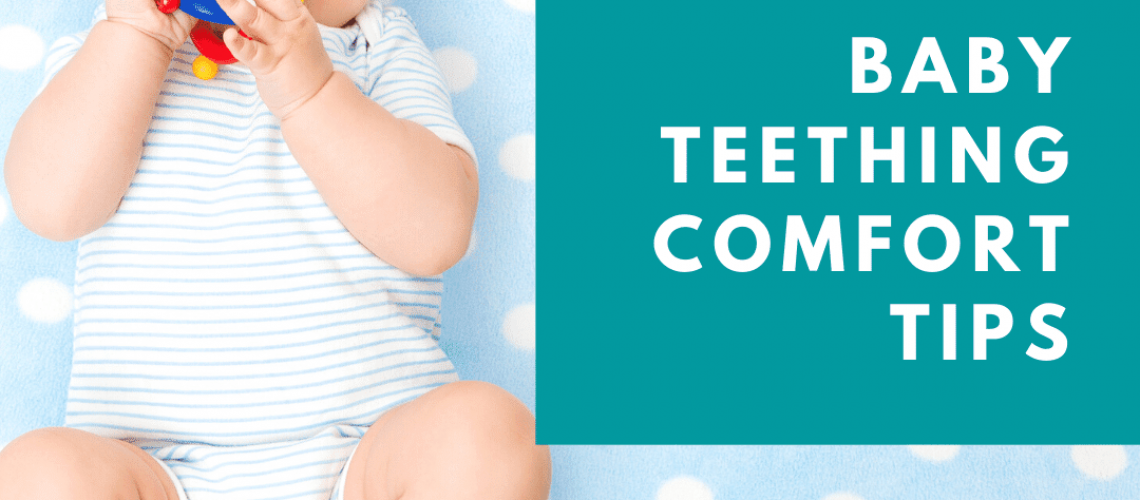Teething is a normal stage of development characterized by the eruption of primary teeth. When your baby is born, their 20 primary teeth are concealed below the gums so that they appear toothless. Starting at around six months of age, these teeth will slowly start to erupt from the gums so that they are visible in the mouth. In most cases, the lower central incisor will be the first tooth you notice. After this, the remaining teeth will erupt from front to back until around the age of 3. By this time, your child will have all their baby teeth.
As many mothers would attest, teething can be a difficult time for you and your child. Teething often causes your child’s gums to become red, sore, and tender to the touch. This is likely to make your child irritable and fussy, and can also affect their sleeping and eating habits. You may also notice that they drool more than usual and may attempt to gnaw on hard objects to alleviate their discomfort. Contrary to popular belief, however, diarrhea, vomiting, coughing, a rash, or a fever over 101° are not normal signs of teething and warrant a call to your pediatrician.
While your child is undergoing the difficult process of teething, you may feel helpless. However, there are a few things you can do to make teething easier on your child. Here are some tips on comforting your child during the teething process:

Use the Power of Cold
Giving your child something cold to put in their mouths is a great way to alleviate the discomfort associated with teething. Wet washcloths, a pacifier, or a teething ring made of rubber are great items to chill in the fridge and give to your child. These items are also soft and safe for them to chew on. On the other hand, some cold items may not be safe since they can damage the teeth and gums, such as items that are frozen solid.

Massage Their Gums
Some children have benefited from a gum massage while teething. Using your finger, a cold washcloth, or gauze pad, you can gently rub the gums to provide relief. However, this solution may not work for all children.
Feed Soft, Cool Foods
While younger children primarily eat softer foods, older children may be experimenting with eating increasingly hard or crunchy foods. However while teething, you should temporarily adjust your child’s diet so that they are eating only soft foods. This will cause less discomfort and encourage them to eat even if they have a decreased appetite. Additionally, foods that are cool will also feel soothing.
Avoid Certain Remedies
While there are a number of remedies available for teething, not all these remedies are safe. Many dentists recommend against using topical numbing medications (lidocaine or benzocaine), herbal remedies, and teething jewelry (necklaces, bracelets, or anklets). Additionally, you will also want to limit the amount of acetaminophen or ibuprofen that you use for pain management. If you are unsure, be sure to discuss teething remedies with your child’s pediatric dentist.
Schedule Their First Dental Visit
Once your child gets their first tooth, you should schedule their first dental appointment with a pediatric dentist. Their pediatric dentist will provide you with advice on how to care for their newly erupted teeth. In most cases, you can expect to brush their teeth with a baby toothbrush and a grain of rice sized spot of toothpaste. Proper oral hygiene is important, even in the very beginning, as it prevents dental problems from occurring.





